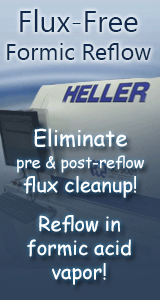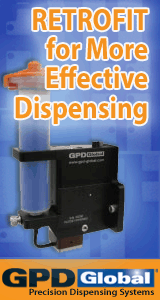Printed Circuit Board Assembly & PCB Design Forum
SMT electronics assembly manufacturing forum.
- SMTnet
- »
- Electronics Forum
- »
- 50 PPM
50 PPM
![]() Hi all,
Our management set target 50 ppm for overall proc...
- Aug 21, 2002
by
JOSEPH
Hi all,
Our management set target 50 ppm for overall proc...
- Aug 21, 2002
by
JOSEPH
![]()
![]()
![]() Hi Joseph
It is not clear what you want us to comment on,...
- Aug 21, 2002
by
Ken Bliss
Hi Joseph
It is not clear what you want us to comment on,...
- Aug 21, 2002
by
Ken Bliss
![]()
![]()
![]() Hi Ken,
Our printing is 49ppm, mounting is 83ppm & reflow i...
- Aug 21, 2002
by
JOSEPH
Hi Ken,
Our printing is 49ppm, mounting is 83ppm & reflow i...
- Aug 21, 2002
by
JOSEPH
![]()
![]()
![]() I would like to address several issues.
First, your reflow ...
- Aug 21, 2002
by
dragonslayr
I would like to address several issues.
First, your reflow ...
- Aug 21, 2002
by
dragonslayr
![]()
![]()
![]() Hey dragonslayr
Just a follow up comment from your commen...
- Aug 21, 2002
by
Ken Bliss
Hey dragonslayr
Just a follow up comment from your commen...
- Aug 21, 2002
by
Ken Bliss
![]()
![]()
![]() First, it�s GREAT that your defect rate of 282 is very close...
- Aug 21, 2002
by
davef
First, it�s GREAT that your defect rate of 282 is very close...
- Aug 21, 2002
by
davef
![]()
![]()
![]() ..and the choir is humming in 5 part harmonies. Personnally,...
- Aug 21, 2002
by
dragonslayr
..and the choir is humming in 5 part harmonies. Personnally,...
- Aug 21, 2002
by
dragonslayr
![]()
![]()
![]() surely, a big picture perspective is in order to keep from c...
- Aug 21, 2002
by
dragonslayr
surely, a big picture perspective is in order to keep from c...
- Aug 21, 2002
by
dragonslayr
![]()
![]()
![]() thats the problem with numbers... how accurate are they anyw...
- Aug 23, 2002
by
jersbo
thats the problem with numbers... how accurate are they anyw...
- Aug 23, 2002
by
jersbo
![]()
![]()
![]() Jersbo- I will refer you to the late, Great Mark Twain, who ...
- Sep 03, 2002
by
dragonslayr
Jersbo- I will refer you to the late, Great Mark Twain, who ...
- Sep 03, 2002
by
dragonslayr
![]()
![]()
![]() I like that "Lies, dam lies and statistics." thats a riot, o...
- Sep 04, 2002
by
Melo_Guy
I like that "Lies, dam lies and statistics." thats a riot, o...
- Sep 04, 2002
by
Melo_Guy
![]()
![]()
![]() We fondly refer to those charts as "wall art".
...
- Sep 04, 2002
by
Steve Thomas
We fondly refer to those charts as "wall art".
...
- Sep 04, 2002
by
Steve Thomas
![]()
- SMTnet
- »
- Electronics Forum
- »
- 50 PPM







